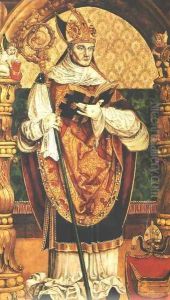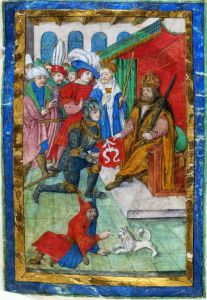Stanislaw Samostrzelnik Paintings
Stanisław Samostrzelnik, also known as Stanisław z Mogilna, was a notable Polish Renaissance painter and Cistercian monk who lived in the 16th century. Born around 1490 in Mogilno in the Kingdom of Poland, his exact date of birth is not known. He is recognized as one of the most prominent representatives of the late Gothic style in Polish painting, with a transition towards the early Renaissance style.
Samostrzelnik joined the Cistercian monastery in Mogilno and later transferred to the monastery in Sulejów. His monastic background played a crucial role in his artistic journey, as monasteries during that period were important centers of cultural life and education. His monastic name, 'Samostrzelnik,' which roughly translates to 'self-shooter,' is believed to have derived from his expertise in illumination—perhaps a metaphor for his ability to 'shoot' with a paintbrush.
His most famous works are the polychrome wall paintings and illuminated manuscripts he created for the monastery at Lubiąż (Leubus), Sulejów, and Kraków. His work often depicted religious themes with a vivid use of color and attention to detail. Of particular note are the frescoes in the cloister at the Lubiąż Abbey, which show a strong influence of the Italian Renaissance, yet they still retain elements of the Gothic style, a testament to the transitional period in which he was working.
Samostrzelnik's contributions to manuscript illumination are also significant. He is known to have worked on several illuminated manuscripts, which are now valuable examples of Polish art from that era. His work is characterized by harmonious compositions, a rich color palette, and intricate details, which reflect both the religious devotion and the artistic trends of his time.
Stanisław Samostrzelnik's death is believed to have occurred around 1541, although, as with his birth, the exact date is not recorded. His legacy lies in the important role he played in the development of Polish painting and in bridging the gap between the Gothic and the Renaissance styles. His artworks remain as some of the most important cultural treasures of Poland, providing insight into the country's artistic and religious history during the 16th century.

